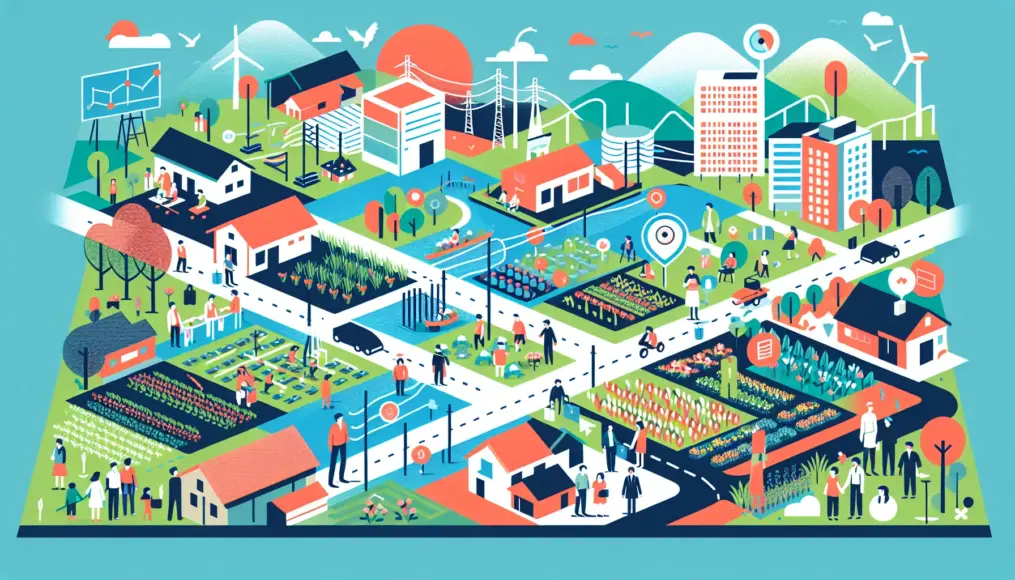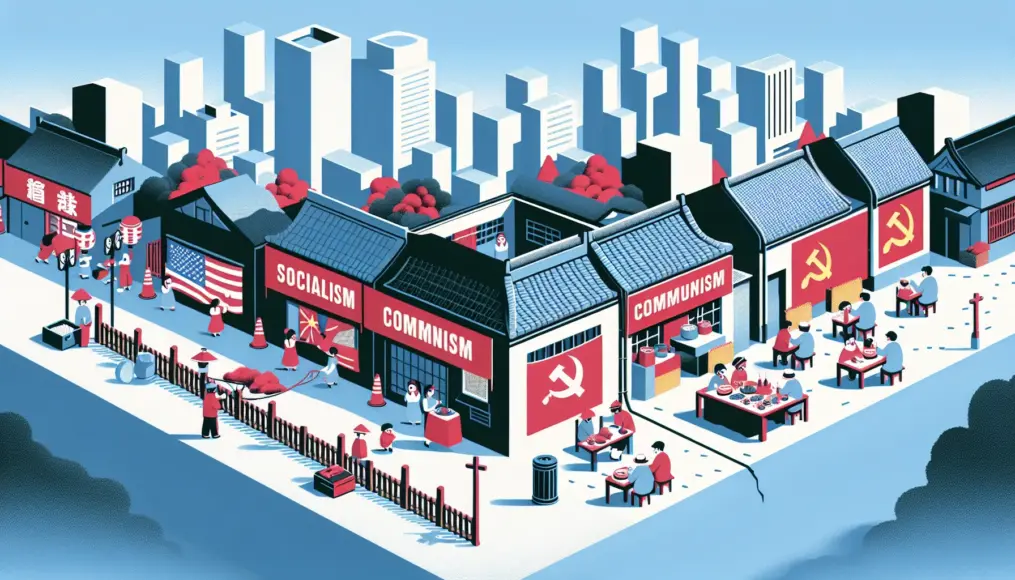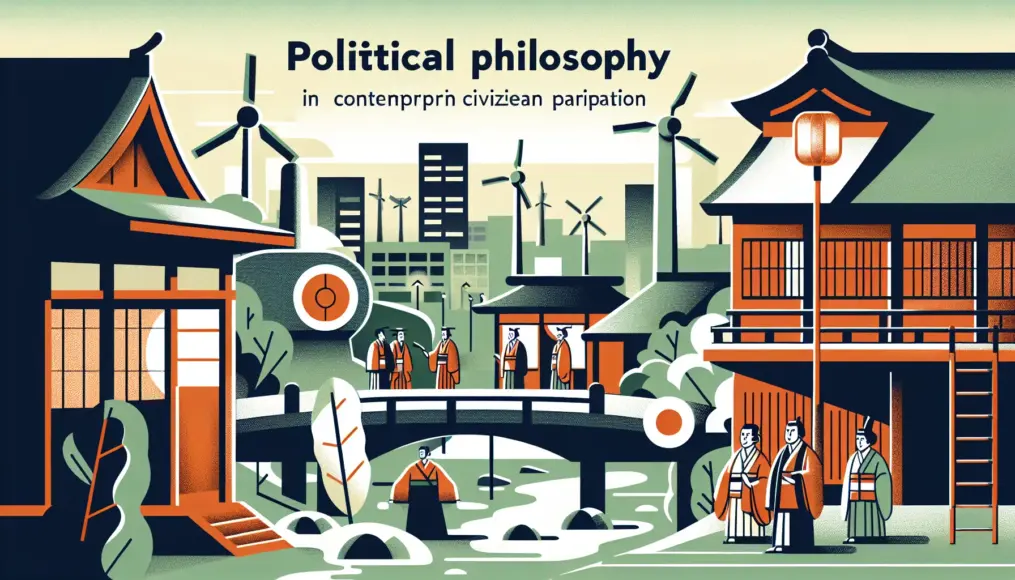Regional development is a crucial initiative aimed at energizing our communities. Spearheaded by the Cabinet Office, policies that leverage the unique characteristics of each region are being implemented. The goal of regional revitalization goes beyond simply revitalizing local areas; it also seeks to foster balanced growth across the entire country.
Understanding how these efforts impact our daily lives, as well as the specific measures being taken by the Cabinet Office, is essential. Communities are coming together, collaborating to breathe new life into their regions. In this article, we will explore the truth behind regional development and its far-reaching effects.
- An overview of the history and objectives of regional development
- Specific policy programs from the Cabinet Office and local collaborations
- The economic and social impacts of regional revitalization
The Background and Purpose of Regional Revitalization
Regional revitalization has garnered attention as a crucial policy aimed at invigorating local communities. This initiative addresses the challenges of population decline and an aging society, striving for sustainable development in areas facing these issues. Spearheaded by the Cabinet Office, a variety of strategies tailored to regional characteristics are being implemented to help rediscover the allure of local areas and empower residents to shape their own futures.
In this section, we will delve into the history of regional revitalization and the objectives and significance of its policies. Understanding how this initiative began and what goals it aims to achieve will provide insight into how we can engage with these efforts.
The History of Regional Revitalization
The movement for regional revitalization is deeply rooted in Japan’s recent social conditions. As economic activity has increasingly concentrated in urban centers, the decline of rural areas has become a pressing concern. In response, the Cabinet Office formulated a “Comprehensive Strategy for Regional Revitalization” in 2014, introducing specific policies to invigorate local communities. This strategy aims to strengthen the economic and social foundations while leveraging regional characteristics.
The history of regional revitalization also outlines a path for local residents to envision their futures. Efforts are being made to maximize local resources and unleash the vitality of these areas.
- Regional revitalization began against the backdrop of urban economic concentration
- The Cabinet Office established a comprehensive strategy in 2014
- Policies leveraging regional characteristics are being implemented
Objectives and Significance of the Policies
The policies surrounding regional revitalization aim not only to boost economic activity but also to enhance the quality of life for local residents. Specifically, these initiatives focus on nurturing industries that support the regional economy while valuing the cultural and social fabric of the communities. Encouraging young people to settle in these areas and strengthening inter-regional cooperation to foster mutual support are also key objectives.
Through these policies, sustainable development rooted in local communities is anticipated. By providing support for residents to create their own futures, the charm of these areas can be revitalized, contributing to national development.
For those interested in this topic, we recommend checking out this article, “The Truth About Regional Revitalization! Success Stories and Challenges,” which offers a detailed look at successful cases and challenges in regional revitalization. Understanding these concrete efforts will help deepen your perspective on the future of local communities.
- Regional revitalization aims to improve the quality of life for residents
- Industry development and encouraging young residents are key policies
- Strengthening inter-regional cooperation to achieve sustainable development
The Cabinet Office’s Specific Initiatives
The Cabinet Office is rolling out a variety of specific policy programs aimed at promoting regional revitalization. These initiatives are designed to harness the unique characteristics of each region while striving for sustainable development. By strengthening collaboration with local communities, the Cabinet Office supports efforts led by residents themselves to invigorate rural areas. In this section, we’ll take a closer look at the key policy programs being implemented by the Cabinet Office and how they engage with local communities.
Key Policy Programs
Among the Cabinet Office’s primary policy programs for regional revitalization are initiatives focused on promoting industries that utilize local resources and support measures aimed at encouraging migration to these areas. For example, projects that capitalize on local specialties and tourism resources are underway, aimed at revitalizing local economies. Additionally, there are comprehensive systems in place for providing information and financial support to those wishing to relocate, facilitating the influx of new talent into these regions.
These policies are designed to make the most of each region’s unique characteristics and bring new value to local communities. Through these efforts, the Cabinet Office aims to enhance regional competitiveness and work towards the realization of a sustainable society.
- Industry promotion programs utilizing local resources
- Support measures for encouraging migration
- Initiatives aimed at revitalizing local economies
Methods of Collaboration with Local Communities
To strengthen collaboration with local communities, the Cabinet Office employs various methods to communicate with residents and local governments. Regular forums and opinion exchange meetings are held to directly hear the voices of the community, allowing for the development of policies that align with local needs. This approach provides residents with opportunities to think about the future of their communities and encourages proactive involvement.
Moreover, to provide tailored support based on local characteristics, collaboration with local governments and private enterprises is also emphasized. This enables flexible and effective responses to the unique challenges faced by each region, fostering successful outcomes in regional revitalization.
- Hosting opinion exchange meetings with residents
- Strengthening collaboration with local governments and private enterprises
- Flexible support tailored to local needs
The Impact of Regional Revitalization
Efforts toward regional revitalization are making significant waves in communities across Japan. Among the most notable effects are the economic and social impacts. With policies promoted by the Cabinet Office aimed at energizing local areas, there’s hope for economic prosperity that will enhance the quality of life for residents. In this section, we will explore the specific economic and social implications of regional revitalization.
Economic Impact
Policies focused on regional revitalization are designed to invigorate local economies. For instance, initiatives that promote the development of regional specialty products and tourism are creating new business opportunities. This, in turn, leads to job creation and increased local consumption, ultimately revitalizing the economy as a whole.
Moreover, initiatives encouraging migration to these areas are resulting in population growth, which is expected to stimulate further economic activities. Thus, regional revitalization is becoming a crucial strategy for strengthening local economic foundations and achieving sustainable growth.
- New business opportunities through the development of regional specialty products
- Job creation and promotion of local consumption
- Population growth and economic activity stimulation through migration incentives
Social Impact
Regional revitalization isn’t just about economics; it also significantly influences social dynamics. By involving local residents in these initiatives, there’s an expectation that community bonds and a sense of belonging will be strengthened. As events and activities that leverage local characteristics increase, residents will find deeper connections with one another.
Furthermore, initiatives aimed at encouraging young people to settle in these areas and support for child-rearing are fostering the next generation of talent that will contribute to sustainable development. In this way, regional revitalization plays a vital role in reinforcing the social fabric of communities, helping to create richer, more vibrant neighborhoods.
If you’re interested in diving deeper into this topic, check out the article “Considering the Impact of Declining Birth Rates on the Economy and Society.” It analyzes how Japan’s declining birth rate affects regional economies and social structures, exploring its connection to regional revitalization. We encourage you to take a look!
- Strengthening community bonds and a sense of belonging among residents
- Increase in events and activities that utilize local characteristics
- Encouraging young people to settle and nurturing future talent for the region
Challenges and Prospects for Regional Revitalization
While regional revitalization has garnered a lot of expectations, it also faces various challenges. The implementation of policies requires a flexible approach tailored to the unique characteristics and needs of each region. Additionally, the active participation and cooperation of local residents are essential for achieving sustainable development. In this section, we will delve into the main challenges of regional revitalization and explore future prospects.
Policy Challenges
There are several hurdles when it comes to the policies surrounding regional revitalization. First and foremost, some regions lack the necessary human resources and assets to effectively implement these policies. This raises concerns about the potential effectiveness of initiatives. Moreover, if local residents have low awareness or motivation to participate, it can become difficult for policies to take root.
Another issue is the tendency to prioritize short-term results at the expense of long-term planning. To understand regional characteristics and aim for sustainable growth, careful planning and execution are essential.
- Challenges in policy implementation due to lack of human resources and assets
- Decline in local residents’ awareness and willingness to participate
- Absence of long-term perspective due to a focus on short-term results
Future Prospects
There is also a great deal of hope for the future of regional revitalization. Through the implementation of policies, we can expect the formation of new businesses and communities that leverage local characteristics. As local residents take the initiative and actively consider and shape the future of their region, revitalization efforts are likely to gain momentum.
Furthermore, by strengthening cooperation between regions, we can build supportive relationships that yield even greater outcomes. Through these initiatives, regional revitalization could take significant strides toward realizing a sustainable society.
To deepen discussions around regional revitalization, it’s important to expand knowledge on related themes. Particularly, the issue of declining birthrates is a major factor that impacts regional revitalization. If this article has piqued your interest, you might also want to check out this piece titled “Practical Approaches to Solving the Low Birthrate Problem!”. It provides insights that can help think about the future of local communities through concrete solutions.
- Formation of new businesses that leverage regional characteristics
- Promotion of proactive actions by local residents
- Strengthening inter-regional cooperation for mutual support
Conclusion
Regional revitalization is a vital initiative aimed at energizing local communities, with various policies being implemented under the leadership of the Cabinet Office. By promoting industry that leverages local characteristics and encouraging migration, these efforts not only boost economic activity but also enhance community spirit among residents. However, challenges such as a lack of human resources, insufficient funding, and decreasing participation from locals still need to be addressed.
Looking ahead, there is hope that local residents will take the lead in efforts to create a sustainable society. Strengthening collaboration between regions can enable them to support each other and achieve even greater results. I truly believe that the progress of regional revitalization will brighten the future of these communities.
- Regional revitalization is a key policy for community enhancement
- The Cabinet Office is advancing initiatives that utilize local characteristics
- Overcoming challenges will pave the way for a sustainable society
The future of local areas is in our hands. What are your thoughts on regional revitalization? We’d love to hear your opinions in the comments!



Comment